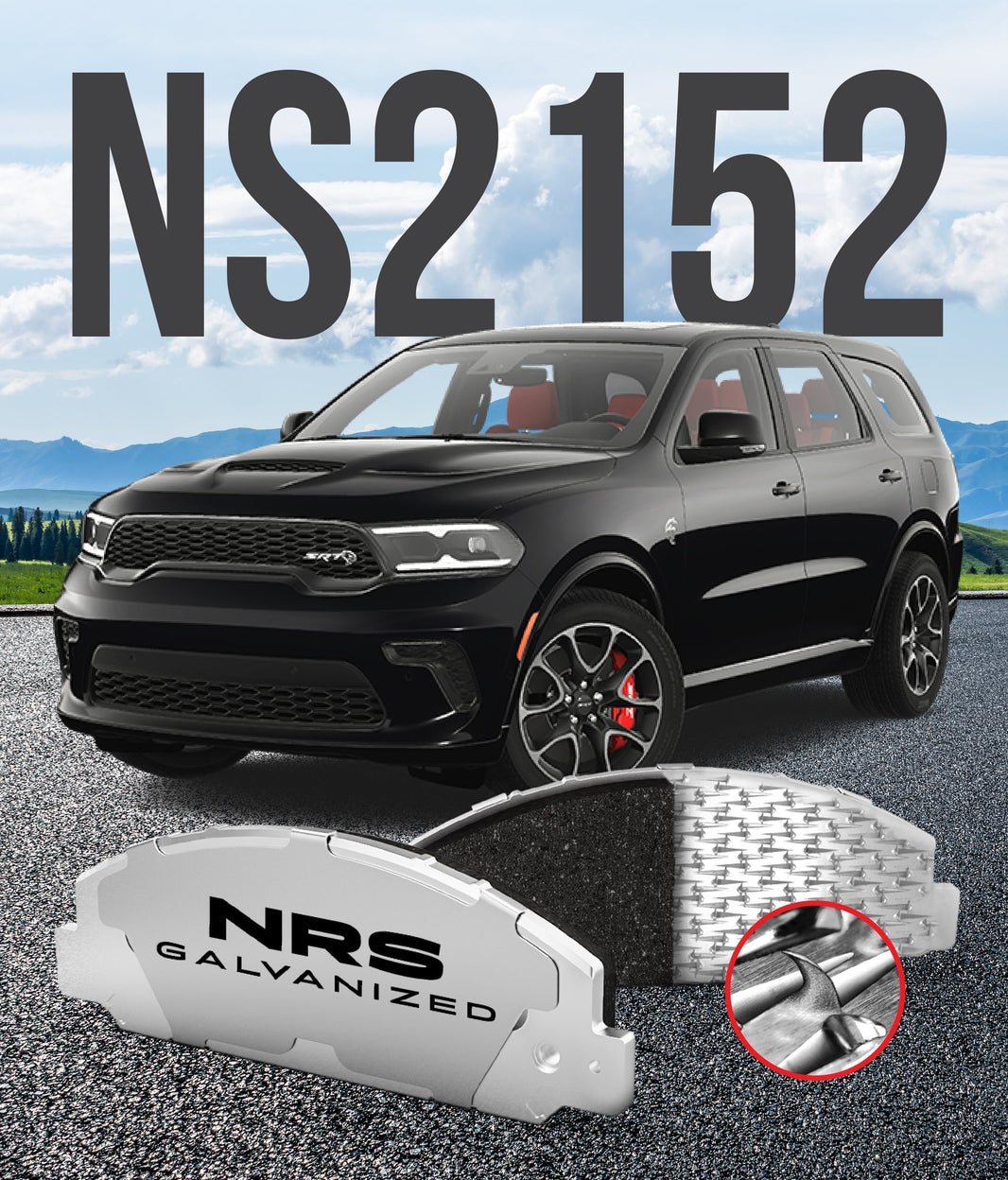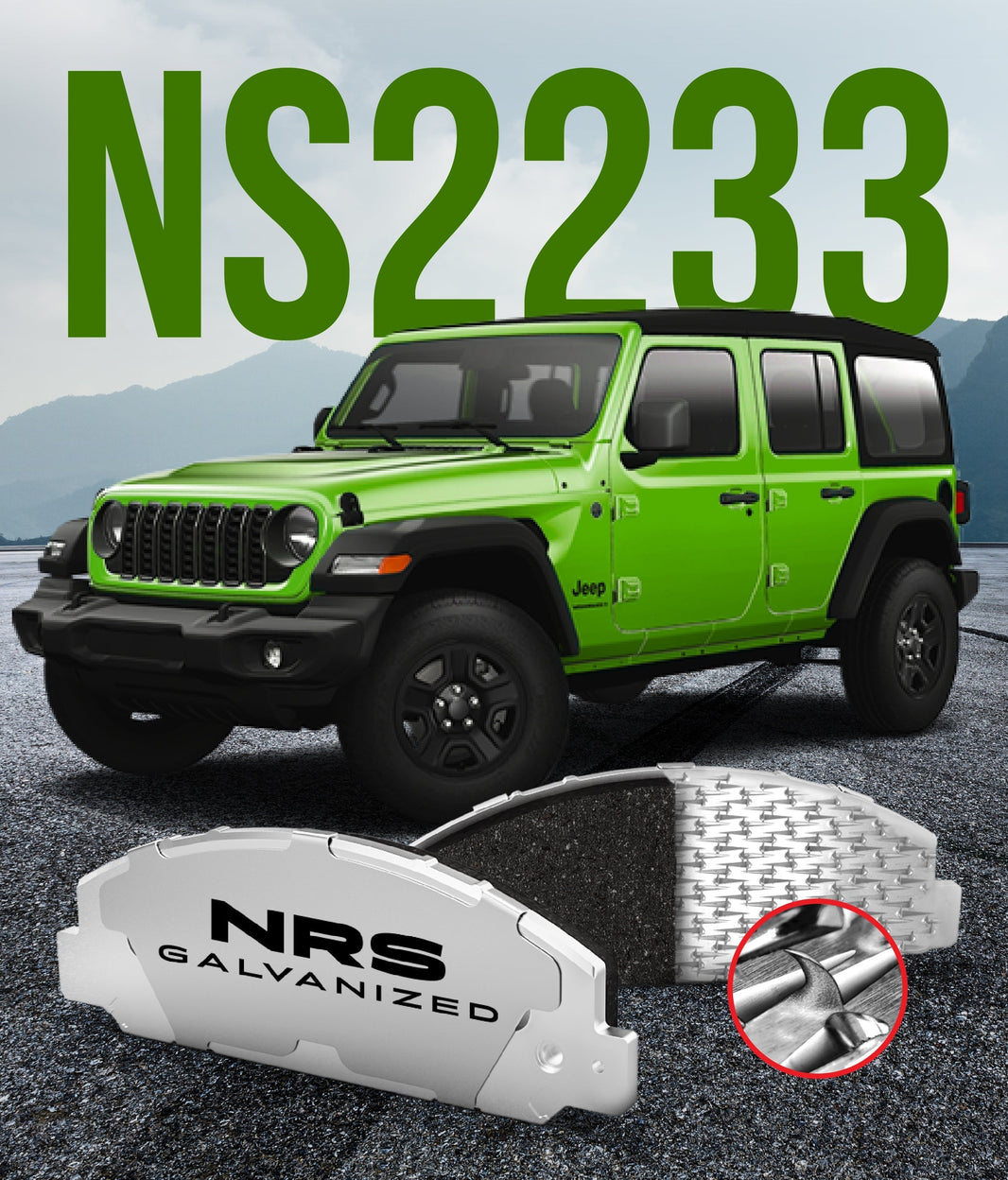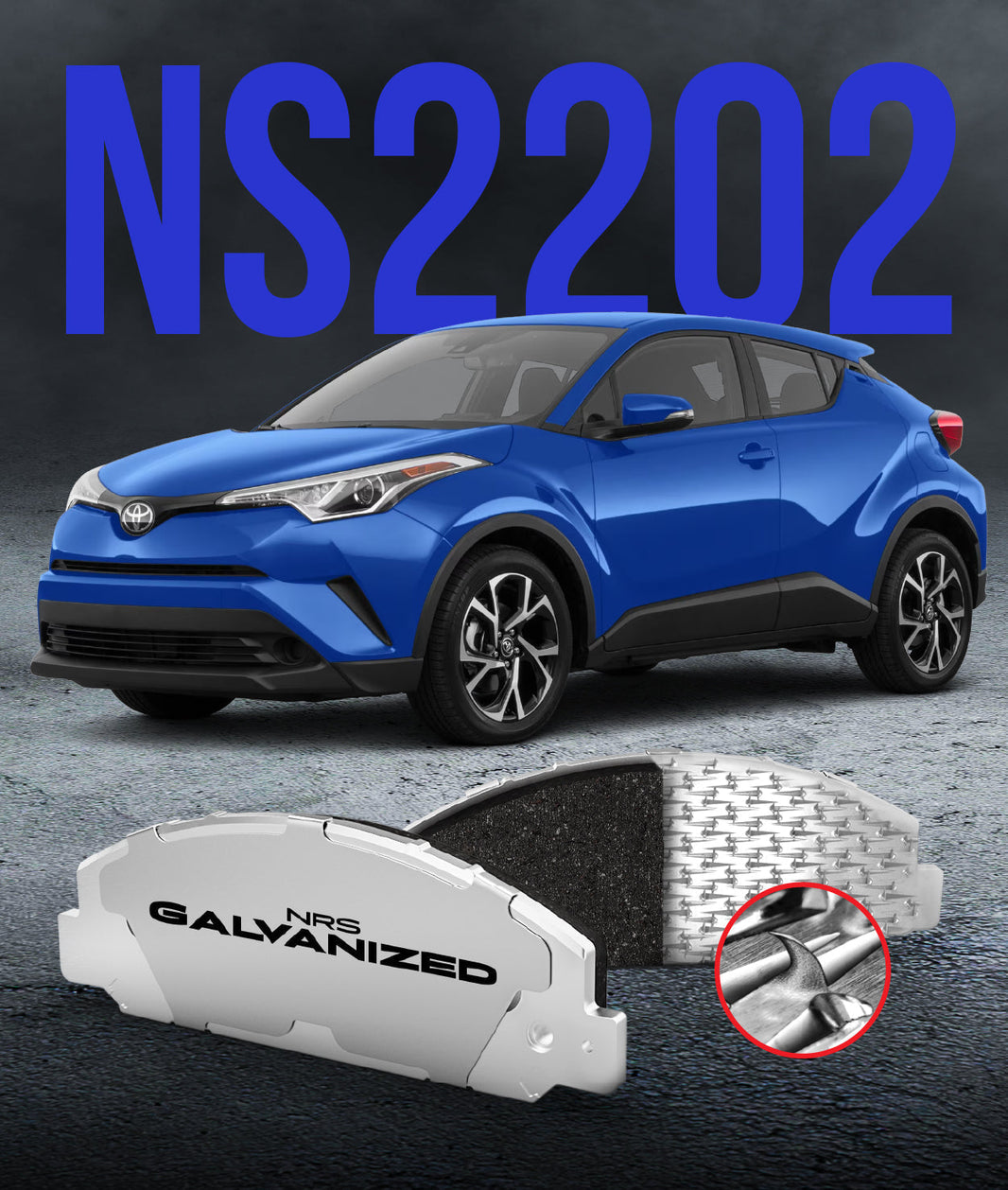
Your vehicle's brake pads are frontline soldiers in a never ending battle against the elements. Beyond the immense mechanical forces and high temperatures they endure during normal operation, they are also under constant environmental assault. From the corrosive brine of winter salt and slush to the baking intensity of summer heat and year round humidity, seasonal conditions wage a relentless war on these critical safety components.
Many drivers are unaware that these environmental factors, rather than just mileage, are often the primary culprits behind premature brake pad failure. Understanding this dynamic is key to choosing brake pads that not only stop your car effectively but also endure through whatever Mother Nature throws their way.
The Winter Assault: How Road Salt Devours Conventional Brake Pads
For those of us living in regions with significant snowfall, the sight of salt trucks is a familiar harbinger of safer winter roads. However, the very compounds used to melt ice and snow – typically sodium chloride, magnesium chloride, or calcium chloride – are exceptionally corrosive to most metals, and your brake pads' steel components are prime targets.
The main vulnerability in traditional brake pads lies in their steel backing plates, which form the structural foundation to which the friction material is attached. These plates are commonly protected by only a thin layer of paint, or sometimes left largely uncoated. When winter salt solution splashes onto these surfaces, it creates a highly conductive electrolyte that dramatically accelerates the rusting process (iron oxidation). Paint offers minimal and temporary resistance; it soon chips, cracks, or is breached, allowing the corrosive brine direct access to the steel. The consequences of this corrosion are severe: the steel backing plate weakens, it can swell (causing the pad to bind in the caliper), and, most critically, the rust physically creeps under and lifts the adhesive layer that bonds the friction material to the plate. This leads to a dramatically increased risk of delamination, even if plenty of friction material remains. It’s a slow, insidious destruction hastened by every salted road.
Beyond the backing plate itself, other steel components within the brake assembly, like clips and shims, also suffer. Corroded hardware can cause pads to stick, wear unevenly, or generate noise. The entire braking environment at the wheel hub becomes a rust belt, significantly shortening the effective life of conventional brake components. This isn't just about looking bad; it's a direct threat to the integrity and performance of your braking system.
Summer's Sizzle and Humidity's Harm: Heat and Moisture's Continuing Toll
While winter salt presents an obvious corrosive threat, summer conditions and year round humidity bring their own set of challenges that can degrade brake pads, especially those relying on conventional construction methods.
Summer heat contributes in two ways. Firstly, high ambient temperatures mean that the brakes start off warmer and can reach even higher peak temperatures during use. The intense heat generated during braking, especially in stop and go traffic, during spirited driving, or when towing, can thermally degrade the organic resins and adhesives used in many traditional brake pads to bond the friction material. This repeated thermal cycling can make adhesives brittle, reduce their shear strength, and ultimately lead to bond failure and delamination.
Secondly, moisture and humidity are not exclusive to winter. Rain, puddles, car washes, and generally humid air (common in many parts of the world during warmer months) constantly expose brake components to water. If a painted backing plate is chipped or compromised, this moisture will readily initiate and sustain the corrosion process, just as salt water does, albeit perhaps at a slower pace without the accelerating chlorides. Freeze thaw cycles in the shoulder seasons (spring and fall) can also be detrimental. Water seeping into microscopic cracks in the paint or around the edges of the adhesive can freeze and expand, physically prying the layers apart and creating new pathways for corrosion. So, even when the salt trucks are parked, the environmental attack on vulnerable brake pads continues.
The Common Outcome: Premature Structural Failure of Traditional Pads
The unfortunate result of this continuous seasonal assault – corrosive winter salt, damaging summer heat, and persistent moisture – is that many traditional brake pads fail structurally long before their friction material is actually worn down to its service limit.
The primary modes of this premature failure are:
-
Rust Induced Delamination: This is a critical safety failure. Corrosion on the steel backing plate works its way under the adhesive, breaking the bond and allowing the friction material puck to detach from the plate. This can result in a sudden and often complete loss of braking at that wheel.
-
Structural Degradation of the Backing Plate: Severe rust can eat away at the steel backing plate itself, reducing its thickness and strength. A weakened backing plate can bend or warp under braking pressure, leading to uneven pad wear, noise, and reduced stopping effectiveness.
-
Seizure or Binding in the Caliper: If the backing plate rusts and swells significantly, the pad can become stuck or bind within the caliper assembly. This can cause the brakes to drag, leading to overheating, accelerated wear of both pads and rotors, and reduced fuel efficiency.
-
Increased Noise and Vibration: Corroded and compromised pad components are far more likely to vibrate and generate squealing, grinding, or other unpleasant brake noises.
Ultimately, drivers often find themselves replacing brake pads not because they've used up all the friction material, but because the pad's underlying structure has succumbed to environmental damage. This means more frequent brake jobs, higher long term costs, and a compromised margin of safety.
The Galvanized Difference: NRS Brakes' Shield Against the Elements
Recognizing these fundamental weaknesses in traditional brake pad design, NRS Brakes engineered a solution specifically to combat environmental degradation: the consistent use of galvanized steel for their brake pad backing plates.
Galvanization is a well established industrial process where steel is coated with a layer of zinc. This zinc coating is not merely a passive barrier like paint; it provides active electrochemical (cathodic) protection to the underlying steel. The zinc is more reactive than steel, so it corrodes preferentially, sacrificing itself to protect the steel from rusting, even if the coating is scratched or breached. This is a vastly superior method of corrosion prevention compared to simply painting the steel.
How does this directly counter seasonal damage?
-
Against Winter Salt: The zinc layer offers exceptional resistance to the corrosive attack of sodium chloride and other de icing salts. It forms a stable barrier that significantly slows down or entirely prevents the electrochemical reactions that cause steel to rust.
-
Against Moisture and Humidity: Galvanized steel provides a continuous, robust barrier against water penetration, effective throughout the year, not just in winter.
-
Overall Structural Integrity: By preventing rust, the galvanized backing plate maintains its original strength and dimensional stability. It won't swell, warp, or weaken due to corrosion, ensuring the pad remains securely located in the caliper and provides a solid foundation for the friction material.
The use of galvanized steel is a cornerstone of NRS Brakes' design philosophy, ensuring that the structural integrity of the pad is maintained for its entire intended service life, irrespective of harsh seasonal conditions.
Why Galvanization is Key for Longevity and Reliability in All Seasons
The benefits of a galvanized backing plate extend directly to the longevity and reliability of the entire brake pad assembly. Because the backing plate remains free of debilitating rust, the primary catalyst for adhesive failure and structural degradation in traditional pads is eliminated.
This means that NRS brake pads are far less likely to suffer from premature failure due to environmental factors. The friction material can be worn down to its intended service limit without the backing plate giving up first. This translates directly into fewer brake pad replacements over the life of the vehicle, leading to significant cost savings for the owner, both in parts and labor. More importantly, it means a more consistently reliable and safer braking system, season after season.
The Supporting Defense: NRS Galvanized Mechanical Attachment – A Bond Unbroken by Heat or Stress
While the galvanized backing plate provides an incorruptible foundation, the method of attaching the friction material to that plate is equally critical, especially when considering the thermal stresses of summer braking or the physical jarring from rough, salt damaged winter roads.
NRS Brakes employs its patented NRS Galvanized Hooks mechanical attachment system. Instead of relying on adhesives that can soften under extreme heat or be undermined by any minute surface imperfections, NRS Galvanized Brake Pads forms hundreds of small, sharp hooks directly into the galvanized steel plate. The friction material is then molded around these hooks, creating an incredibly strong, physical interlock. This mechanical bond is virtually unaffected by temperature extremes and provides a level of shear strength far exceeding that of adhesives. The synergy is clear: the galvanized plate offers a perfect, rust free surface for these hooks to be formed into and to grip, ensuring the attachment remains secure under all conditions, preventing delamination.
Real World Endurance: Built for the Toughest Climates and Conditions
The combination of galvanized steel backing plates and the NRS Hooks mechanical attachment system results in a brake pad uniquely equipped to handle the rigors of year round driving, especially in demanding climates like in North America.
These aren't just laboratory benefits; they translate into real world durability and performance. NRS Galvanized pads are engineered to resist the corrosive onslaught of winter road treatments and the degrading effects of summer heat cycles. This means more consistent braking performance, significantly reduced risk of noise and vibration caused by corroded or loose components, and above all, a brake pad that lasts longer because it doesn't succumb to premature structural failure. This is why they are a smart choice for drivers who expect reliability regardless of the weather forecast.
We at NRS Brakes understand that brake pads face a relentless battle against both mechanical wear and environmental degradation. Our engineering philosophy directly addresses the severe impact of winter salt, summer heat, and ambient moisture by utilizing robust galvanized steel backing plates and our patented NRS Galvanized Brake Pads Hooks mechanical attachment. This combination ensures that our brake pads resist corrosion, prevent delamination, and maintain their structural integrity, allowing the friction material to be fully utilized for a longer, safer service life. We are committed to providing the Best Brake Pads that offer superior protection against seasonal destruction, giving drivers lasting peace of mind and exceptional value, no matter what conditions they face on the road.




